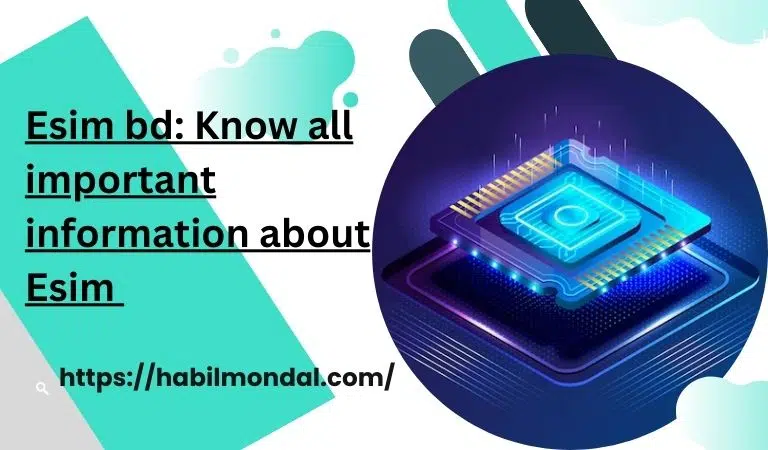What does USB’s full name mean? USB full form: Universal Serial Bus (USB), a recognized industry standard, specifies the cables, connectors, and protocols for interconnecting, communicating, and providing power to computer devices and other computers. Moreover, There is a large selection of USB gear available. There are 14 distinct types of connections among these, with USB-C being the newest.
Meaning of USB full form in computer
USB is the most widely and reliable method of connecting computers to other devices. for example, The keyboard, the mouse, digital camera, printer, scanner, external hard drive, external CD/DVD reader, etc., may all be operated by USB.
USB helps us in any way.
The existence of USBs is not well known.
I’ll cover the fundamentals of USB in this essay.
So, check this article and learn about USB.
USB full form in English
The full name of the universal serial Bus is USB. Every word in the replica of the universal serial Bus has a consistent meaning.
- Universal: The word universal means universal. This term refers to the universality of various devices. Universal words that can be used.
- Serial: Using the term serial means transmission technology. The modern world has two essential technologies. For example, One is parallel, requiring more bandwidth and PIN when sending data under multiple data lines. Another early technology is serial.
So, This allows sending a database to send data below the data line.
- Bus: Bus here basically means a bus-type topology.
Moreover, Universal Serial Bus, or USB, is the port’s name. The technology connects computers with peripheral devices—an interface standard for connecting peripheral devices such as a USB cable to a USB port or computer.
Above all, It can supply power and channel devices like phones or laptops.
Characteristics of USB full form
- Firstly, The following list includes some of USB’s most essential features.
- Secondly, 3.0 is the latest version that is currently being used on computers. It has overall speed.
- Thirdly, Up to 127 peripherals can be connected with a single USB host regulator.
- further, Most devices support the USB method.
- And Many USB peripherals, such as a keyboard, mouse, external storage devices, etc., may run on electricity from a computer without the power supply’s assistance.
- In addition, A power-saving option is available on several USB devices. Further, This implies that gadgets will automatically go to sleep when the computer system is at its best for an extended period.
When was the USB created?
USB devices are a handy tool. USB was created with the user in mind, making it easier for Windows, MAC, and other types of computers to connect to external devices. Microsoft, Compact, Intel, Nortel, DEC, IBM, and NEC were among the seven businesses that collaborated to create USB in 1994.
USB full form overview :
USB IS is designed to adapt the peripheral connection to the provisioned electrical power for communication in a personal computer. The USB Full Form is Universal Serial Bus Has Replaced Interface Sach as a Serial Port and Parallel Pots, and It Has Become Common on Scattered Devices. Peripheral Connected Via USB Arey Computer for example , Keyboard & Mice, Video Cameras, Portable Media Players, Printers, Mobile, Digital Telephones, Disk Dryers, and Network Adapters.
As a result, USB connections have increasingly been installed as charging cables for portable devices.
Before we start, let’s take a closer look at the USB.
Short-form – USB
Definition – universal serial Bus
Type – Abbreviation
Category – computer and IT, Technology Gadgets
Region – New york
Read more related post:
Decoding the Full Form of Google: An Inside Look
USB full form version history
| Name | maximum transfer rate | release date – | note |
| USB 0.7 | ? | 11 November 1994 | pre- release |
| USB 0.8 | ? | December, 1994 | pre- release |
| USB 0.9 | full speed (12mb/t/s) | 13 April 1995 | pre- release |
| USB 0.99 | -? | August 1995 | – pre- release |
| USB 1.0 RC – | -? | November 1995 – | release candidates |
| USB 1.0 | full speed( Mbit/s – | 15 January 1996 – | – |
| USB 1.1 | low speed (1.5 Mbit/s) | August 1998 | – |
| USB 2.0 | high speed (480 Mbit/s) | April 2000 | – |
| USB 3. | Superspeed USB (5gbit/s) – | November 2008 – | 0also referee as usb 3.1 gen and usb 3.2 |
| USB 3.1 | super speed + USB(10 Gbit/s) – | July 2013 – | include network USB 3.1 Also named gen USB 3.2 in later specification |
| Usb3.2 -+ | superspeed USB dual-lane ( 20 Gbit/s) | August 2017 | includes network USB 3.2 gen 2 and gen2 multilink modes |
| Usb4 | 40 gbit/s includes network usb4 gen 2
(64b/ 66b encoding) a gen 3*2 (128b/ 132b encoding) |
N and introduction | |
| Usb4 | routine tunnelling USB 3.x, | ||
Display port and PCI exp traffic and host train thunder bol protocol.
USB full form production history
Designer – compact, dec, IBM, Intel, Microsoft, Nortel
January 1996,26 years ago
Produced – in May 1996
Superseded – Apple desktop bus, PS/2, parallel port, gaming port, serial port
Port and firewire ( IEEE 1394)
Further. The installation of detailed protocols designed to act as intelligent controllers on peripheral devices is required for product developers that utilize USB. An annual fee and organization membership is required for the usage of the USB logo in the product. For retail sales, USB device creators require a USB ID. Developers must submit a payment to the implementer’s Forum to get this USB ID (if). USB users must sign an agreement with USB – IF for their product.
The objective of USB full form
The primary purpose of USB full form (universal serial Bus) is to simplify and improve the interface between computers and peripheral devices. Notable among them are cell phones, computers, and monitors. These were compared to previously existing or ad-ik ownership interfaces. So, There are ways to make the interface more accessible and better to use from the point of view of the computer user.
How to connect a USB with the computer?
Place the USB device into the computer’s USB port to establish a connection between USB and PCs. When you insert the device, it will immediately recognize it and begin working. After that, Rebooting the computer and USB device has been inserted into the computer is not required. Above all ,we can say that ,Universal Serial Bus (USB) devices come in a variety of sizes.
What are USB settings?
The default USB settings on an Android smartphone limit users from carrying out operations, such as transferring data, documents, music, photographs, or videos, while the device is connected to a computer. However, users can change these settings and place the USB mode on the Android device. A hidden setting must be enabled to change these settings on an Android device. For this reason, This setting is called developer mode. Open the setting application and scroll down to the next page to set Android a developer mode. There click on “about phone” or “system” and then tap “build number .”If the build number option is not visible, proceed to the advanced setting menu.
USB full form system
A USB full-form system creates a tiered-star topology with multiple peripherals. Additional USB hubs with five layers can be included here. A USB device is a device function that can exist in several logical sub-devices. A composite device may perform a variety of tasks, such as a webcam (video device function) with an integrated microphone (audio device function)
More than one controller-connected port may be present on a USB host. In addition, The device may be attached to a single host controller in groups of up to 127. 4 – 29 USB devices are connected in series through a hub. The root hub is the hub constructed as the host controller. Each logical device has a unique address, and all analytical devices are connected to an endocrine hub connected to the actual USB cable.
Pipes are the name for the host’s channels. That is, a line is a logical channel. USB communication activities are performed based on the tube. USB endpoints are present on the connected device. The same endpoints are compatible with the pipes. Further, There can be 16 in and 16 out terminals on each USB device. But finding them all is challenging. There are two types of pipes: rustic and the other is the message.
The message pipe is bi-directional and is used to establish controls. As a result, Message pipes are usually used for simple commands, which are of a concise type. And The message is also used for pipe status responses—for example, the bus control pipe number O. Above all, we can say that The message pipe between the stream pipe and the message pipe is more efficient because it is a two-pointer endpoint that can receive two types of information.
USB device classes
The USB full form functionality of a USB device transmitted by a class code for a USB device is determined. Moreover, The software for this network allows to load modules and support new devices from different manufacturers.
| Class | usage | description | examples or exception |
| 00h | device | unspecified | device class is anonymous, and interface descriptions are used to determine a needed device |
| 01h | interface | audio | speaker, microphone, sound card, midi |
| 02h | both | communications and CDC control | |
| 03h | interface | human interface device (hid), | keyboard, mouse, joystick |
| 05h physical interface | interface | physical interface | device(pid) – force feedback joystick |
| 06h | interface | image (ptp/ mtp) | webcam, scanner |
| 08h | interface | mass storage ( MSC or us) | USB flash drive, memory card reader, digital audio player, digital camera, external drive |
| 09h | device | USB hub | a full brand with a hub |
| 0ah | interface | CDC | used together with class 02h ( communications and CDC control) above |
| 0bh | interface | smart card | USB smart card reader |
| 0dh | interface | content security | fingerprint reader |
| 0eh | interface | video | webcam |
| personal healthcare device class (Ph.D.) | pulse monitor watch | ||
| audio / video ( Av) | webcam, tv | ||
| 11h | device | billboard | describes USB-c alternate modes supported by devices |
Class – us age – description – examples or exception
Types of USB
USB controllers can be divided into three parts depending on their sizeঃ
- Standards size USB
- Micro size USB
- Mini size USB
Read more related post:
OSS full form || OSS Full Form in Computer
What are USB and their types?
Universal Serial Bus referred to as USB. It is a cable connector that connects computers and devices. It helps to supply power and exchange data with it. There are three different USB kinds. For example , The first is a standard-size USB.
- Micro size USB
- Mini Size USB
In addition, Apart from these, some other types of USB are
Firstly, type – a
Secondly, types – b
In Addition, types – c
USB Type b
USB b is the most common type of device. The USB type b standard is relatively old. This device based on certain assumptions. USB b devices include mouse, keyboard, smartphone, etc. This device can assume that they only acknowledge the existence of another device as long as they follow the USB protocol. USB connectors include type A and type B plugs and jacks. Further , USB cable assemblies designed with different individual connectors.
USB types c
USB type -c is a connector that has emerged for various data and energy transmitters. It create by the USB implementing forum that brings together companies to create USB standards.
Using the USB type -c 700 companies, it is worth mentioning: For example ; Apple, dell, hp, intel, Microsoft, and Samsung.
USB types -b to USB type -c
Standard-b designed to handle speeds similar to standard -b 3.0.
8.3 * 2.5 mm -A, Type-C port and connector micro USB-b same size. It reduces the size of USB-c so that even the smallest peripheral devices may use it. On the other hand, USB -b is a relatively old device. USB full form has some limitations. USB – type – c intend to make the task easier and more lyrical by overcoming these limitations.
transaction of USB
The primary marketing of USB full form is
- Firstly, in transaction
- Secondly, out transaction
- And control transfer exchange
- In addition, setup transaction
USB connectors
Various types of USB connectors are considered as specification progress. Standard A and B plugs and receptacles are included in the original USB’s full specifications. USB users could not connect one computer to another because the connectors were different. The device has to be made functional before data is deployed. As a result , the data pins of standard plugs are seen compared to the power pins. Depending on these tasks, some devices work in different modes, and whether the data has been connected can be understood. Moreover, A functional USB device allows handling charges from a standard USB cable. So, Here the host device or data pin is included. Charging only can provide the connection but cannot provide the information. When setting the cable, the data wires are shortened at the end of the device; otherwise, the device may be rejected as a modifier.
- Firstly, The USB interface is safe-configuring, removing the need for the user to modify the device’s settings for speed or data format, input-output addresses, and configure interrupt sets. The USB interface is host-swappable and Devices may be switched without rebooting the host computer.
- Secondly, A device either completely automatically configures employing being device drivers when a stoner entraps it into a harborage on a running computer.
What’s a USB string?
The short form of USB cable is a universal serial bus. Cameras, printers, scanners, camcorders, and many more devices among the most often used USB cable assemblies. These add-ons operate by connecting to a computer.
Moreover, USB cable allows USB-powered gadgets, cameras, and other peripherals to recharge batteries. And Other USB cable connect to different individual connector types.
USB cable connection
One of the different types of USB cable is the Portable USB entire form flash drive. This cable connected with a desktops, televisions, laptops, etc. In addition , A USB cable used to make a USB cable connection. After that , The computer connect to the peripheral device with a USB cable. Some of the main specifications of USB connectors are Standard – A, Standard – B plugs, and receptacles.
So, USB users use the USB cable to connect one computer to another.
wireless USB uses
Wireless USB is used in various fields, For example, printers, scanners, game controllers, digital cameras, disk drives, USB flash drives, and portable media players. So , It is helpful in a few different situations. In addition ,The fields are employing USB over ultra-wideband technologies to send parallel video feeds.
wireless USB-related standard
The Forum implementing the USB logo and implementers launched the media-agnostic USB protocol-based USB v.1.0 wireless communication standard was released on July 29, 2015. Ultra-wideband wireless technology with a data rate of 480 mbit/s is used by wireless USB, a technology that replaces cables. Further, The winning serial extension v1.2 specification used for USB-if is the primary basis of MA – USB and is compatible with superspeed USB (3.0 and 3.1) and high-speed USB (USB 2.0).
Advantages of USB
- Firstly, USB is less expensive
- Secondly, Low power consumption
- Further, Each USB port can connect devices to a USB.
- And USB connections come in different ways because USB sizes vary.
- It has a reliable linking system.
- The large variety of transfer devices connected to a USB interface is appropriate for streaming VHS interfaces, keyboards, and mice.
- In Addition, The USB full-form interface is universal with no signal line
- Since, The USB standard does away with creating exclusive interfaces for new peripherals.
- Moreover, For time-sensitive tasks, a USB interface can offer the lowest possible latency or be configured to transport large amounts of data in the background while using little system resources.
The disadvantage of USB.
- Firstly, The transmission of data is slower than in other systems.
- Secondly, limited overall performance and effectiveness.
- Further, Broadcasting is not supported over USB.
- The peripheral and the host can exchange a single message.
- And The master protocol for peripheral devices in the USB complete version has a tight tree network structure, preventing peripheral devices from communicating with one another directly. Direct communication between two hosts is not possible through USB connections. Compared to other interconnects like the 100 gigabit Internet, USB data transmission speeds are slower.
- Since a host cannot simultaneously broadcast signals to all peripherals, each peripheral must be addressed separately.
- Moreover, The standard created for peripherals on the same tabletop, not throughout rooms or buildings. Hence USB cables are limited in length.
- There are white converters that connect specific vintage ports to USB.
- In addition, They may not give full perpetration of the heritage tackle.
Some other terms of USB full forms
Some other necessary and helpful USB full forms that are essential:
- USB – Unique Selling Benefit
- USB – Union State Bank
- USB – Ultra Small Brunch
- USB – United Soybean Board
- USB – United Security Bank
- USB – University of California, Berkeley
- USB – Undergraduate School of Business
- USB – Under Sea Battlespace
- USB – United States Biological
- USB – United States Board
A brief history of USB
To read this article, you will learn about USBs. Now I will explain to you all a brief history of USB. Microsoft, IBM, Compact, Intel, DEC, NEC, and Nortel collaborated to establish USB in 1994 as part of a project to make connecting devices to computers simple.
These companies manufactured USBs that worked with laptops and computers at acceptable speeds. Multiple operating systems, including Windows, Linux, Mac, etc., support USB. So, In the current modern age, the main method for exchanging data and power between computers and other electronic devices is USB. USB 1.0, USB 2.0, USB 3.0, and USB 3.1 are some common USB version s. when there is no USB , computers worked Very slowly. USB has increased the work speed of the computer much more.
Moreover , Each independent harborage is available for a mouse, keyboard, printer, or scanner. The poor speed of these connections was the most significant drawback when connecting to computers. Along with the Lower speed, several biases ran into interface compatibility problems. So, This is the need for USB emerged.
Read more related post:
OTT full form : Know all about OTT
Conclusion
In conclusion, This article will help you know and understand USB in full form. This article discusses various aspects of USB, which will deepen your level of knowledge. So , Read the post and get ideas about USB in complete form. Still, partake in it with your musketeers. I am looking forward to your valuable comments if you like this content. Your helpful comments will encourage me to write better articles. So, See you in the following entry.
Be healthy.







